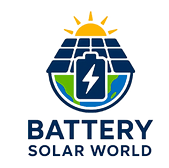Choosing the Right Solar Panels for Your Home
- partho1paul
- Aug 25
- 5 min read
As the world shifts towards renewable energy, many homeowners are considering solar panels. The benefits are clear: lower energy bills, reduced carbon footprint, and increased home value. However, with so many options available, how do you choose the right solar panels for your home? This guide will help you navigate the process, ensuring you make an informed decision.
Understanding Solar Panel Types
Before diving into the specifics, it is essential to understand the different types of solar panels available. The three main types are:
Monocrystalline Solar Panels: These panels are made from a single crystal structure. They are known for their high efficiency and longevity. If you have limited roof space, these panels are a great choice.
Polycrystalline Solar Panels: Made from multiple crystal structures, these panels are generally less efficient than monocrystalline panels. However, they are often more affordable, making them a popular choice for many homeowners.
Thin-Film Solar Panels: These panels are lightweight and flexible. They can be installed on various surfaces, but they usually have lower efficiency compared to the other two types. They are best suited for large areas where space is not a concern.
Efficiency Ratings
When choosing solar panels, efficiency is a crucial factor. Efficiency ratings indicate how much sunlight a panel can convert into usable electricity. Higher efficiency means more energy production, which is especially important if you have limited roof space.
Monocrystalline panels typically have efficiency ratings between 15% and 22%.
Polycrystalline panels usually range from 13% to 16%.
Thin-film panels can vary widely, often between 10% and 12%.
Understanding these ratings will help you determine which type of panel is best for your energy needs.
Cost Considerations
Cost is often a significant factor in choosing solar panels. While it is tempting to go for the cheapest option, consider the long-term savings and benefits. Here are some cost-related points to keep in mind:
Initial Investment: Monocrystalline panels tend to be the most expensive, while polycrystalline panels are more budget-friendly. Thin-film panels are usually the least expensive.
Long-Term Savings: Higher efficiency panels may cost more upfront but can save you more on energy bills over time.
Incentives and Rebates: Check for local, state, or federal incentives that can help offset the initial costs. Many areas offer tax credits or rebates for solar panel installations.
Warranty and Lifespan
When investing in solar panels, consider the warranty and expected lifespan. Most solar panels come with a warranty of 25 years, but this can vary by manufacturer. A longer warranty often indicates higher quality.
Monocrystalline panels typically last longer and have better warranties.
Polycrystalline panels may have slightly shorter lifespans.
Thin-film panels usually have the shortest lifespan and warranty.
Choosing panels with a solid warranty can provide peace of mind and protect your investment.
Installation and Maintenance
The installation process can vary based on the type of solar panels you choose. It is essential to hire a qualified installer to ensure the job is done correctly. Here are some tips for installation and maintenance:
Choose a Reputable Installer: Look for installers with good reviews and experience. Ask for references and check their credentials.
Regular Maintenance: Solar panels require minimal maintenance, but it is essential to keep them clean and free of debris. Regular inspections can help identify any issues early.
Monitor Performance: Many solar systems come with monitoring tools that allow you to track energy production. This can help you ensure your system is functioning optimally.
Environmental Impact
Choosing solar panels is not just about saving money; it is also about making a positive impact on the environment. Solar energy is a clean, renewable resource that can significantly reduce your carbon footprint. Here are some environmental benefits of solar panels:
Reduction in Greenhouse Gas Emissions: By using solar energy, you can help decrease reliance on fossil fuels, which contribute to climate change.
Sustainable Energy Source: Solar energy is abundant and sustainable. Unlike fossil fuels, it will not run out.
Job Creation: The solar industry is growing rapidly, creating jobs in manufacturing, installation, and maintenance.
Local Climate Considerations
Your local climate can significantly impact the performance of solar panels. Here are some factors to consider:
Sunlight Exposure: Areas with more sunlight will benefit more from solar panels. If you live in a region with frequent cloud cover, you may need to consider higher efficiency panels.
Temperature: Solar panels perform best in cooler temperatures. If you live in a hot climate, look for panels designed to handle high temperatures.
Snow and Rain: If you live in an area with heavy snowfall or rain, ensure your panels are durable and can withstand these conditions.
Choosing the Right Size
The size of your solar panel system will depend on your energy needs and available roof space. Here are some steps to determine the right size:
Assess Your Energy Usage: Review your electricity bills to understand your average monthly usage. This will help you determine how much energy you need to generate.
Calculate System Size: A general rule of thumb is that a 1 kW solar system can produce about 1,200 kWh per year. Use this to estimate the size of the system you need.
Consider Roof Space: Measure your available roof space to ensure you can accommodate the number of panels required for your system size.
Researching Manufacturers
Not all solar panels are created equal. Researching manufacturers can help you find high-quality products. Here are some tips for evaluating manufacturers:
Reputation: Look for manufacturers with a solid reputation in the industry. Check reviews and ratings from other customers.
Certifications: Ensure the panels meet industry standards and certifications. This can indicate quality and reliability.
Customer Support: Good customer support is essential. Choose a manufacturer that offers assistance and resources for installation and maintenance.
Financing Options
Financing your solar panel system can make it more affordable. Here are some common options:
Cash Purchase: Paying upfront can save you money in the long run, as you will avoid interest payments.
Solar Loans: Many banks and credit unions offer loans specifically for solar installations. These can help spread the cost over time.
Leasing: Some companies offer solar leases, allowing you to use the panels without purchasing them outright. However, this may limit your savings.
The Future of Solar Energy
The solar energy industry is constantly evolving. New technologies and innovations are making solar panels more efficient and affordable. Here are some trends to watch:
Bifacial Panels: These panels can capture sunlight on both sides, increasing energy production.
Building-Integrated Photovoltaics (BIPV): This technology integrates solar panels into building materials, such as windows and roofs.
Energy Storage Solutions: Battery storage systems are becoming more popular, allowing homeowners to store excess energy for use during non-sunny periods.
Making the Final Decision
Choosing the right solar panels for your home can seem overwhelming, but it does not have to be. By considering your energy needs, budget, and local climate, you can make an informed decision.
Take your time to research and compare options. Consult with professionals and ask questions. Remember, investing in solar panels is not just about saving money; it is about contributing to a sustainable future.
In the end, the right solar panels can transform your home and your energy consumption. With careful consideration and planning, you can harness the power of the sun and enjoy the benefits for years to come.





Comments